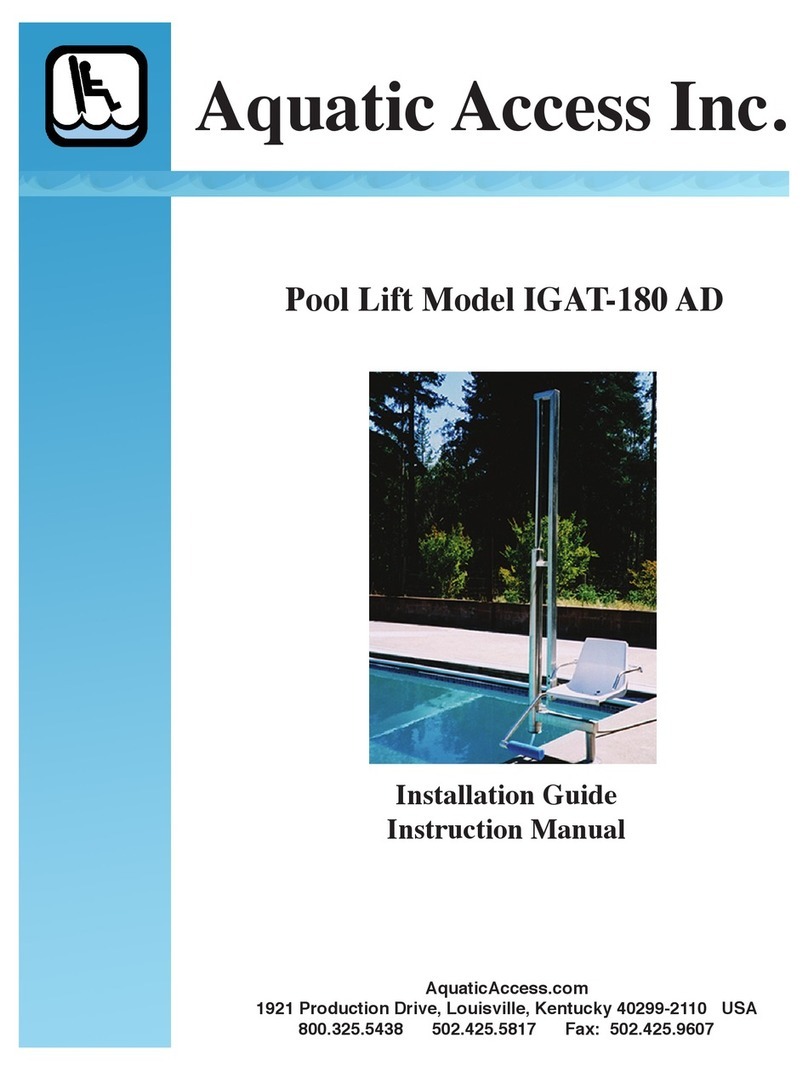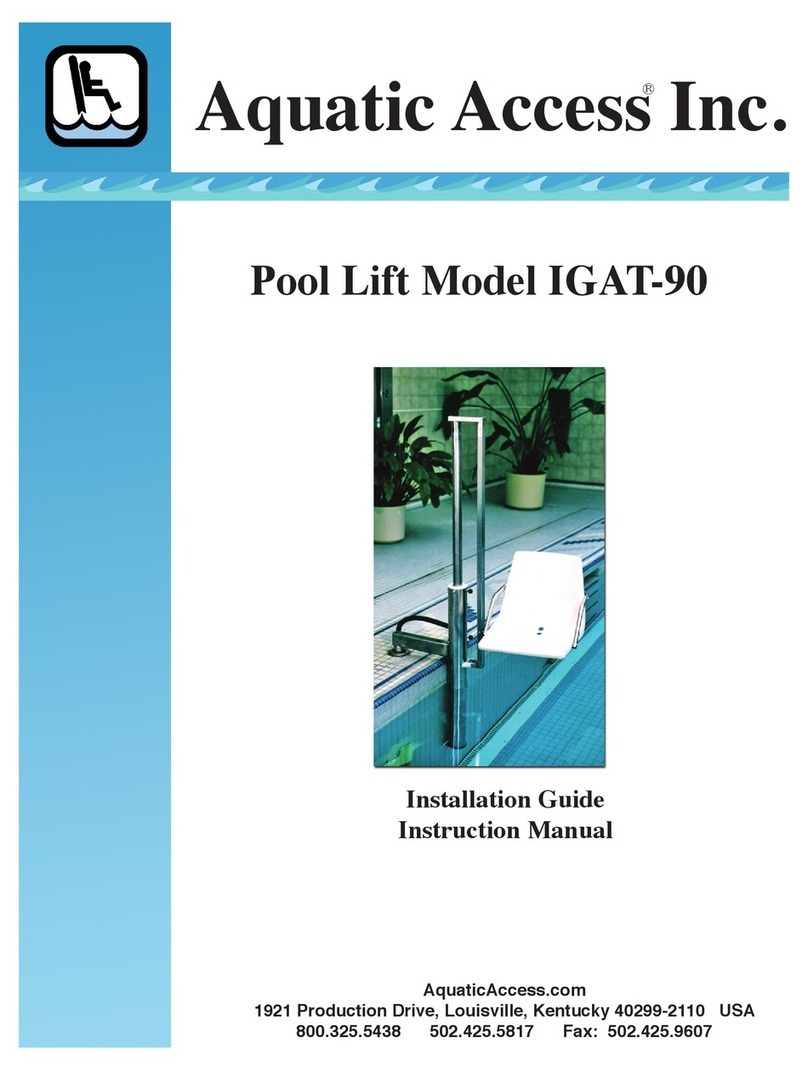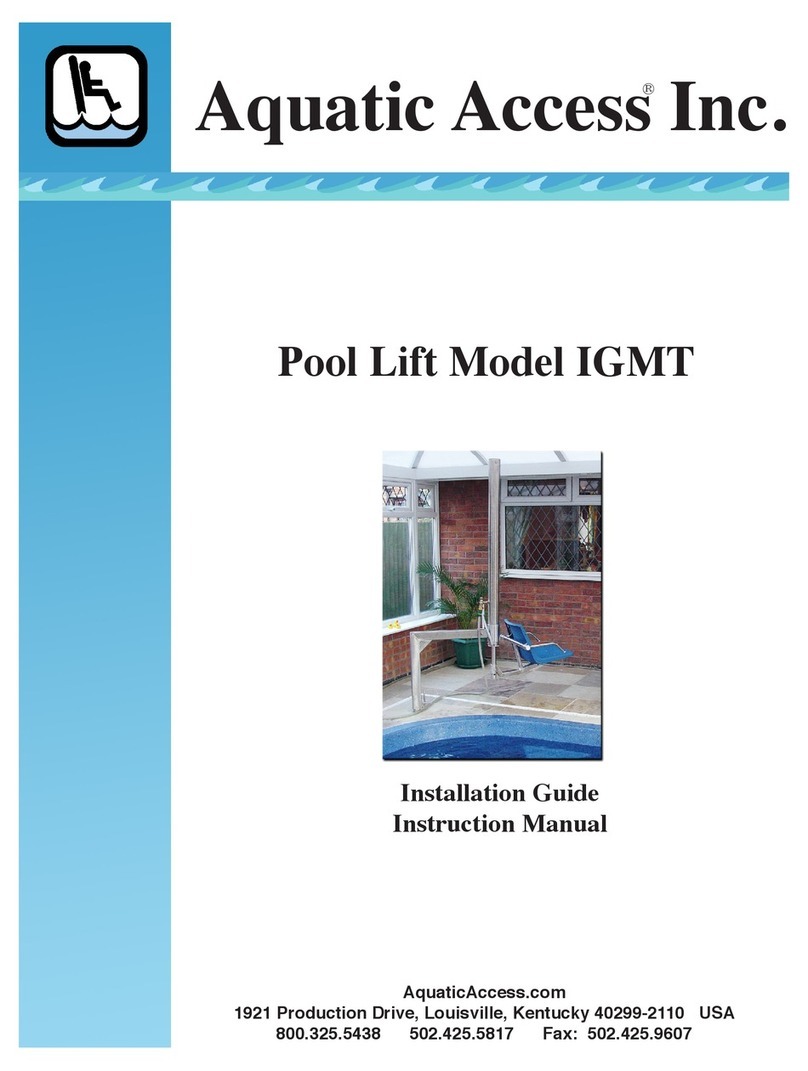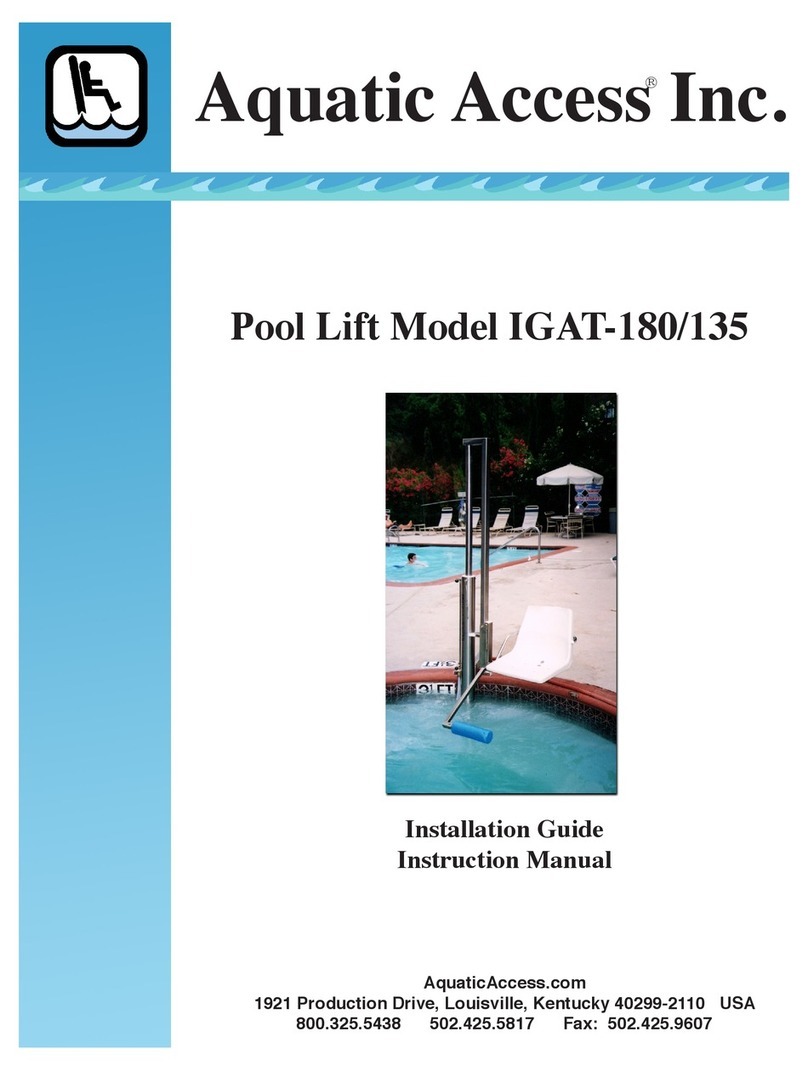
PREPARING TO INSTALL LIFT
To assemble the lift, you will need two adjustable wrenches to tighten the nuts and bolts
provided.
In most cases, the lift ships from our factory in two cartons. The long carton contains the cylinder
assembly, the wheelbase mounting plate, and the wheel assembly. The wheel assembly is
wrapped in bubble wrap and attached to the hose with a zip tie. In the other carton, you will nd
the seat assembly, the socket, and any accessories you ordered with your lift.
LIFT ASSEMBLY
Slide the mounting arm onto the inner telescope and attach T-support bracket using the bolt
and nut supplied with the T-foot support. Additional torque on this bolt will squeeze the walls
together on the outer mounting arm telescope to eliminate looseness with the inner telescope. The
T-support bracket attaches on the side of the cylinder opposite the valve.
To attach wheel assembly, detach the wheelbase mounting plate from bottom of cylinder by
removing the two bolts. Insert the same bolts through holes in wheel assembly, wheel base
mounting plate, and base of cylinder.
If your installation includes a vinyl-liner wall pad assembly, you will nd it packed under the
seat assembly. Attach it to the ends of wheelbase mounting plate with the bolts and nuts supplied
with the vinyl-liner wall pad. When properly adjusted, the pad should be ush against the pool
wall with the cylinder vertical. Tighten bolts after adjustment.
Insert lift fully into socket and make sure the post’s tab ts into the notch in the socket. Check
adjustment of wheelbase mounting plate (and vinyl-liner wall pad, if used), making sure that it
touches the pool wall rmly. Note: the wheelbase mounting plate can be rotated 180° to achieve
a better adjustment. Remove lift to adjust. Tighten bolts after satisfactory adjustment.
Failure to maintain a tight t between the wheel base mounting plate (and vinyl-liner wall
pad, if used) against the pool wall can result in movement of the cylinder which may prevent
achievement of lifting capacities at advertised water pressures.
Re-insert lift into socket. Check for secure contact of wheelbase mounting assembly (and vinyl-
liner wall pad if used) against the pool wall and t-support bracket on deck when cylinder is
vertical.
Attach seat assembly to piston rod frame with the bolt provided. Adjust seat height by selecting
an appropriate hole on piston rod frame Tighten lock nut securely, making sure bolt has
penetrated nylon insert of lock nut. Two bolt threads should be visible past the nylon insert.
4































